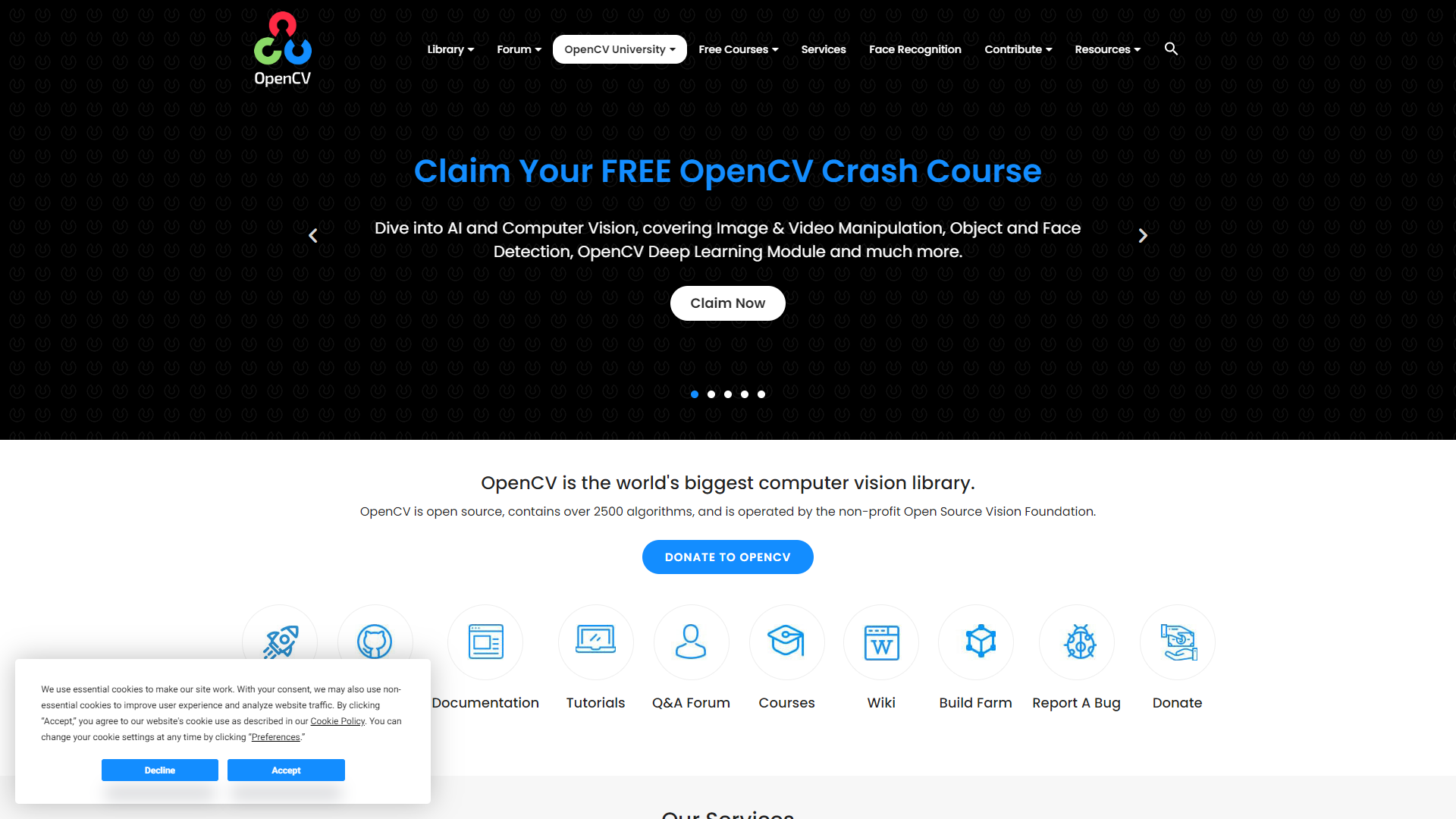
OpenCV
OpenCV is a powerful tool for image processing and computer vision.
🏷️ Price not available

- Overview
- Pricing
- Features
- Pros
- Cons
Overview
OpenCV, or Open Source Computer Vision Library, is a popular library used for real-time computer vision. It was created to provide a unified infrastructure for computer vision applications and to accelerate the usage of machine perception in commercial products. With OpenCV, developers can create advanced capabilities such as face detection, object tracking, and motion analysis.
Pricing
| Plan | Price | Description |
|---|---|---|
| Mid-Market | N/A | 27% less expensive than the avg. Image Recognition product https://www.g2.com/products/opencv/reviews?filters%5Bcompany_segment%5D%5B%5D=180 |
Key Features
🎯 Comprehensive Library: OpenCV offers more than 2500 optimized algorithms for processing images and videos.
🎯 Real-Time Processing: The library is designed to handle real-time processing, making it essential for applications requiring quick responses.
🎯 Cross-Platform: OpenCV works on various operating systems, including Windows, Linux, macOS, and Android, allowing a wide range of device support.
🎯 Machine Learning Support: OpenCV provides tools for machine learning, aiding in the development of sophisticated models.
🎯 Support for Multiple Languages: The library supports languages such as C++, Python, Java, and MATLAB/Octave, enabling diverse usage.
🎯 Integration with Other Libraries: OpenCV can easily integrate with libraries like NumPy and TensorFlow for enhanced functionality.
🎯 Strong Community Support: A large community surrounds OpenCV, providing documentation, tutorials, and forums to help users.
🎯 Open Source: Being open source means that users can modify and distribute the library freely, encouraging innovation.
Pros
✔️ Free to Use: OpenCV is completely free, making it accessible for students and professionals alike.
✔️ Extensive Documentation: The library comes with comprehensive documentation, helping users learn and implement it effectively.
✔️ High Performance: With many of its algorithms optimized for performance, OpenCV delivers fast processing speeds.
✔️ Wide Application Range: OpenCV is used in various industries like robotics, security, and healthcare, showcasing its versatility.
✔️ Active Development: The continuous updates and improvements from its developers ensure that OpenCV stays relevant.
Cons
❌ Steep Learning Curve: For beginners, the vastness of the library can be overwhelming and requires time to master.
❌ Limited Support for 3D Applications: While great for 2D, OpenCV has limited capabilities in handling 3D data.
❌ Inconsistent Documentation: Some parts of the documentation can be outdated or lacking detail, making it hard to find help.
❌ Error-Prone: New users may encounter issues as the library can sometimes behave unpredictably with certain inputs.
❌ High Memory Usage: Some applications may face challenges with memory consumption, particularly in resource-limited environments.
Manage projects with Workfeed
Workfeed is the project management platform that helps small teams move faster and make more progress than they ever thought possible.
Get Started - It's FREE* No credit card required
Frequently Asked Questions
Here are some frequently asked questions about OpenCV. If you have any other questions, feel free to contact us.